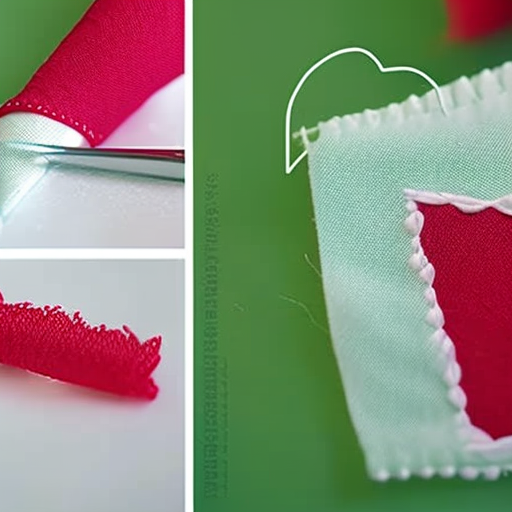
Learning some quick sewing techniques can save you time, effort, and allow you to quickly mend or create fabulous garments. Whether you are a seasoned sewist or just starting out, these tips and tricks will prove invaluable during your sewing journey.
The Backstitch
The backstitch is a strong and secure stitching technique used to prevent seams from unraveling. To backstitch, start by sewing a few stitches forward, then sew back over the stitches you just made, and continue sewing forward. This creates a reinforced stitch that holds the fabric together firmly.

Using a Serger
Sergers are a fantastic tool for creating clean and professional finishes. They cut the fabric edges while sewing, preventing fraying and providing a neat edge. Use a serger to finish raw edges, create rolled hems, or sew stretchy fabrics with ease.

Bobbin Management
Organizing your bobbins is essential for efficient sewing. Make sure to wind your bobbins neatly and keep a designated storage container to prevent tangling. Label each bobbin with the corresponding thread color to easily identify the right one for your project.

Seam Allowance Tips
Accurate seam allowances ensure precise and polished sewing projects. Use a seam gauge or the markings on your sewing machine to measure and mark the seam allowance. Additionally, consider using specialty presser feet with seam guides to assist you in maintaining consistent seam widths.
Hand Stitching Mastery
Hand stitching is a valuable skill to have for small repairs or delicate fabrics. Learn basic hand stitches such as the slip stitch, blind hem stitch, and running stitch. These stitches will allow you to invisibly mend seams or attach details such as buttons.
Utilizing Fusible Web
Fusible web, also known as iron-on adhesive, is a time-saving method for hemming or attaching appliqués. Simply place the fusible web between fabric layers, apply heat using an iron, and bond the materials together. It eliminates the need for pins or basting stitches and creates a strong bond.
Pattern Marking Tools
To ensure accurate sewing, use various pattern marking tools such as tailor’s chalk, disappearing ink pens, or tracing wheels with carbon paper. These tools help transfer necessary marks, darts, or buttonhole placements from the pattern to your fabric without leaving permanent traces.
Quick Thread Color Test
When unsure of which thread color matches your fabric best, perform a quick test. Place a few different colored threads on a small piece of fabric, hold it against your project, and observe which thread blends in most seamlessly. This easy technique saves time by avoiding multiple re-threading attempts.
With these quick sewing techniques in your repertoire, you’ll conquer any sewing project swiftly and successfully. Remember to practice, experiment, and most importantly, enjoy the process of creating beautiful garments with your sewing skills!




